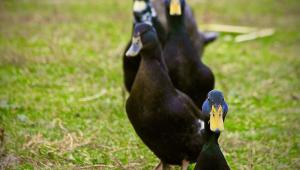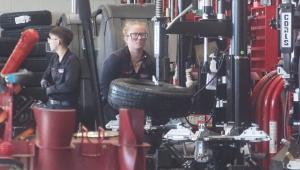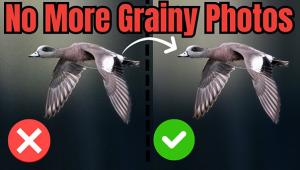The Nikon F6
A State Of The Art Film SLR Page 2
 |
|
|
Scrolling down the back LCD you'll also come across a Set-Up menu that allows you access to such items as the date, date format, and something that's very exciting, what they call Shooting Data. This is really neat as you can recall everything that you'd see on a digital camera, like the lens used, exposure, focal length, and even the time. And to broaden this feature, you can download this information (via the data within the INFO button) as text data to your computer via a Data Reader MV-1 for future reference. In short, what you have here is a built-in data back, something you had to pay extra for in the past but that is now included within the parameters of the F6.
 |
|
|
Next, you'll find a Shooting menu which allows you to imprint your film
with the date, day, or time at the bottom right-hand corner or in between frames,
regulate multiple exposures, and set up an interval timer. But this is no ordinary
interval timer. For long spans between shots the meter will shut off, then 30
seconds before the picture is taken turns back on and the autofocus is activated
2 seconds before the shutter is released. On top of all this, you can program
the Mirror Up and Bracketing mode up to seven exposures that would include 0.3,
0.5, 0.7, and 1 full stop of compensation. This bracketing mode is new to the
F6 (the F5 could go up to nine but you needed an additional data back) and can
be used in any application within the camera programs.
Finally, you'll find a program that allows you the use of non-CPU lenses,
the language that you are talking to the camera in (English, German, French,
etc.), and buttons that relate to menu, ISO, and flash control that takes full
advantage of Nikon's brand-new and innovative i-TTL Advanced Flash Data
system. It goes without saying that 3D Color Matrix metering is part of the
package, as is their flexible center-weighted and spot metering patterns that
allow you, via those 11 sensors, to zero in on the most accurate exposure possible
within the limits of available light and subject matter.
 |
|
|
 |
|
|
In closing, I find the new Nikon F6 a very exciting piece of equipment. The camera is tough yet sensitive to all of my shooting needs, exposures were dead on, focus was sharp, and overall, the F6 was indeed an extension of my shooting abilities in the field.
Could I ask for anything more? At the present time, no, but the fat lady isn't done singing yet!
Nikon's New AF-S Teleconverter TC-17E II
Like most things that seem to meet halfway or look like a compromise, Nikon's
brand-new 1.7x tele-converter is the exception. The product itself is only 1.2"
long by the common 2.6" in diameter, fitting in between two established
icons of 1.4x and 2x. Internal construction gives it resolving power to enhance
its position between lens and camera with Nikon currently listing the makeup
as having seven elements in four groups all placed in a tight package that checks
in around a half a pound. We've all seen how Nikon is big on compatibility
so this tele-converter will talk to most lenses now available; works with the
VR mode and AF-S functions; assures accurate metering; works perfectly in autofocus
with Nikon cameras from the D-series digital down to N75 film cameras; and light
loss is only in the neighborhood of 1.5 f/stops before your image reaches the
film (or sensor) plane.
 |
|
|
In the field, I found the TC-17E II an interesting tool to use considering what it's up against in balancing optics from the prime lens through the tele-converter and on to the camera. It is available now at a street price of around $420.
Technical Specifications
Lens Mount: Nikon F mount
Custom Settings: 41 are available
Exposure Modes: Program, Shutter-Priority, Aperture-Priority,
and Manual
Autofocus: TTL phase detection; Nikon Multi-CAM 2000 with 11
different spots within the viewfinder
Focus Tracking: Automatically activated by using either Single
Servo AF or Continuous Servo AF
Autofocus Area Modes: Four areas within viewfinder, manual
selection on camera back
Metering Options: Matrix, center-weighted, or spot
Metering Range: EV 0 to EV 20 in 3D matrix and center-weighted;
EV 2 to EV 20 in spot
Bracketing Options: Two to seven shots; 1/3, 1/2, 2/3, or 1
full stop
Shutter Speeds: 30 seconds to 1/8000 sec
Maximum fps: Eight with optional MB-40 battery pack
Flash Control: Compatible with previous Nikon flash units and
newer i-TTL technology
Weight: Approx. 34.4 oz with batteries or the optional MB-40
battery pack
Street Price: Around $2200 for the body; $399 for the MB-40
battery pack
For more information, contact Nikon by visiting their website at: www.nikonusa.com.
Stan Trzoniec is a frequent "Shutterbug" contributor and a widely published author on the outdoors, photography, railroads, and travel with over 1800 magazine articles, 700 full color covers, and five books to his credit. His new photography book, "Images of the Present," is due out this fall. He can be reached at fotoclass@aol.com.
- Log in or register to post comments

































